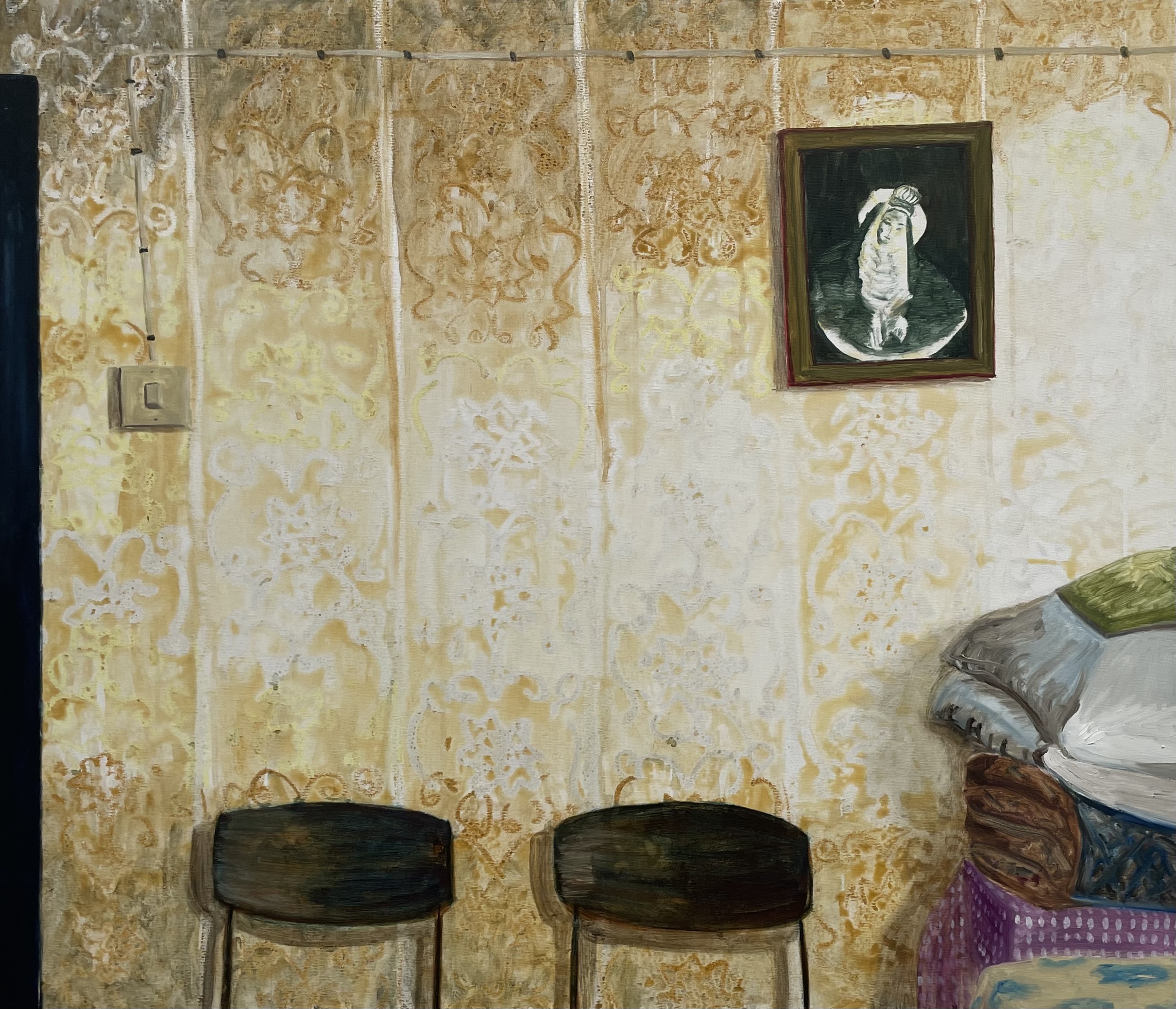Interiors fly-posts the grand civic forms of the Ropac townhouse with sheets from the Financial Times and the Daily Mail and vast expanses of poured latex. Everything is soft and pastel. A curtain, also dipped in beige latex, isolates an oppressively-filled room. Contours of the continents are discernible underneath the rubber, alongside fragmented of headlines. A cacophonous narrative, an equally discordant video collage. Upstairs, the forms devour the walls, too. Some worn-out carpets compete with another soundtrack. The eye longs for the calmer view outside.
El-Sayegh says she wanted to replicate Freud’s consulting room and her studio. But for the abundance of material, there simply aren’t enough ideas in the exhibition to go around these Mayfair halls. The show thus looks like a hurried response (all works dated 2023) to a gap (four weeks) in the schedule. Sometimes, access to the resources of a mega-gallery is a curse. By contrast, El-Sayegh’s restrained 2019 Chisenhale exhibition was far more ambitious.






